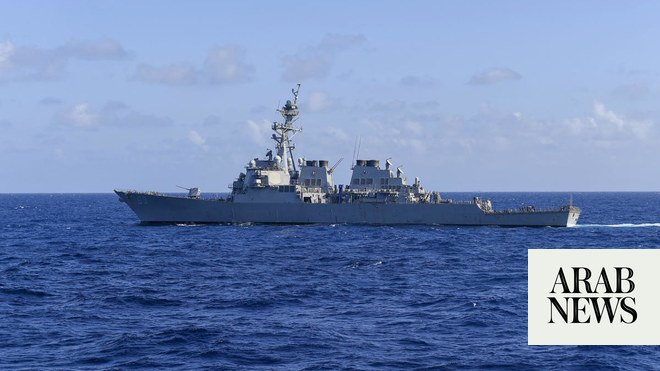
A Japanese warship sailed through the Taiwan Strait between Taiwan and China for the first time, according to reports in Japanese media.
The JS Sazanami, a naval destroyer, passed through the strait from north to south on Wednesday, accompanied by ships from Australia and New Zealand.
The vessel was on its way to take part in military exercises in the South China Sea, Japanese ministers were quoted as saying.
This would be a significant move by Japan, which is thought to have avoided sailing its ships through the strait in order not to upset China, which claims self-governed Taiwan and the strait.
Neither Japan, Taiwan or China has commented officially on the passage.
Chinese state newspaper Global Times, citing an unnamed source, said the Chinese military "conducted tracking and monitoring throughout [the vessels"] entire course and had the situation under control".
There has been an increase in patrols by the US and its allies to assert their freedom of navigation in the 180km (112-mile) Taiwan Strait.
Both the US and Taiwan say it is a key shipping and trade route through which about half of the global container fleet passes, and is part of international waters and is open to all naval vessels.
Beijing, which claims sovereignty and jurisdiction over the strait, disagrees.
For decades the US Pacific fleet was the only foreign navy that regularly transited the strait. But recently, it was joined by Canada and Australia, Britain and France. Two weeks ago Germany sailed two navy ships through the strait for the first time in decades.
China"s military accused Germany of increasing security risks by sailing though the strait on 13 September, but Berlin said it acted in accordance with international standards. It was the first time in 22 years for a German naval vessel to traverse the strait.
These transits are highly political and designed to show China that America and its allies do not accept Beijing’s claims.
For Japan, it is also another big step away from its long-held policy of not directly challenging China.
On Thursday, Japan’s chief cabinet secretary did not confirm details of the naval operation, but he said Japan felt a strong sense of crisis after repeated airspace violations by the Chinese military, which he said had occurred one after another over a short period of time.
Taiwan has not commented on the passage, but its defence ministry said on Wednesday that it saw a surge in the number of Chinese military planes operating around the island.
Bec Strating, an international relations professor at La Trobe University in Australia, said Japan"s reported transit is "part of a broader pattern of greater naval presence by countries in and beyond Asia that are concerned about China"s maritime assertions".
"Japan in particular has been dealing with China"s "grey zone" tactics in the East China Sea," she told AFP news agency.
Grey zone warfare tactics are aimed at weakening an adversary over a prolonged period of time, analysts say.
Last week, Beijing sent an aircraft carrier between two Japanese islands near Taiwan for the first time. In August, a Chinese spy plane flew inside Japan"s airspace, prompting Tokyo to condemn the incursion as "utterly unacceptable" and a "serious violation of sovereignty".
The leaders of the Quad group of nations — Japan, Australia, India and the US — said last week that they would expand cooperation on maritime security to counter China"s increasing assertiveness in the South China Sea. — BBC










